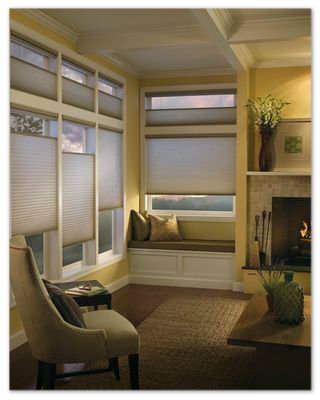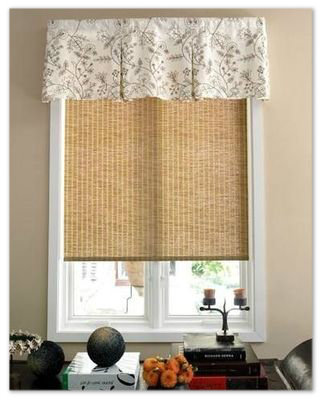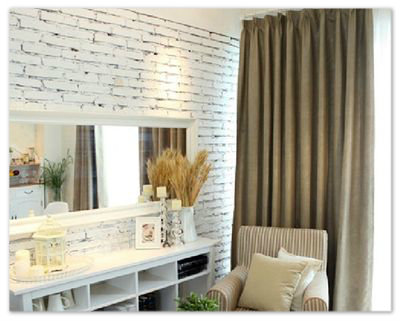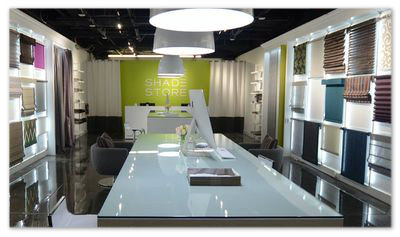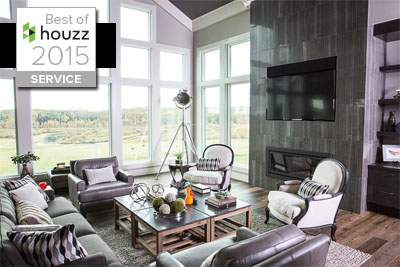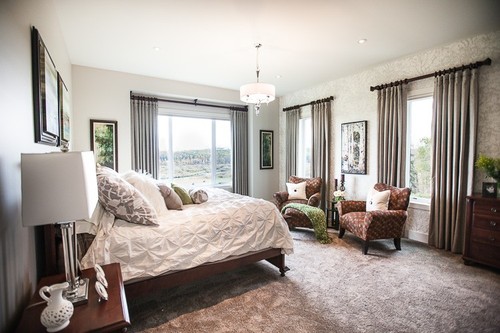Alberta homeowners waste thousands of dollars on unnecessary energy costs, and confront extensive damage to their interiors because they don’t know how to properly cover their windows.
As a window treatment specialist, I’ve discovered that area residents spend far more on heating and cooling than they need to. In addition, some experience hundreds or even thousands of dollars of damage to their furniture, rugs, artwork, flooring and even clothes in their closets because of UV rays.
Homeowners can take simple steps to prevent energy loss at their windows, and to avoid sun damage to their interiors.
Here are some of the strategies I share with my clients:
1. Locate the Losers.
Approximately 60% of your home’s heating and cooling is lost through your windows and doors, and the biggest windows often cause the biggest problem. North-facing windows present additional heat loss problems in winter as the lack of direct sun prevents the window surface from warming up.
Windows facing west present severe heat gain challenges due to the direct summer sun in the afternoon.
Make it your top priority to install new window treatments on those windows that feel coldest in winter and warmest in summer. Some shades can reduce energy lost through the window by up to 50 percent.
2. Take Cover.
Anything is better than nothing when it comes to covering your windows, and reducing energy loss and UV damage. Your window treatment options range from roller shades to honeycomb shades, from solar screens to draperies.
The best of these come in a variety of colors and fabrics, and offer you various combinations of superior energy efficiency, outstanding UV protection, excellent views, and the opportunity to control light and temperature throughout the day.
Adding a fabric valance atop your treatments provides significant protection against the convection currents which scatter unwanted heat or cold through the house.
3. Know Your “Odds.”
Take inventory of the arched, angled, half-round, triangular and other odd-shaped windows. Are they covered and, if so, how well?
Some of your home’s worst problems with glare, UV exposure and energy loss can be traced to these specialty-shaped windows. That’s because they’re the ones least likely to have window treatments. About 53% of all heat entering the home in the summer comes through windows that aren’t covered.
Odd-shaped windows are often the hardest to reach, which makes it worth considering motorized controls to raise and lower the treatments that cover them.
4. Think Thermal
Adding thermal lining to draperies and roman shades can work wonders when it comes to increasing insulation, blocking drafts and making a room feel more comfortable.
You can have custom draperies made to order with the fabric of your choice over a thermal lining. Quilted drapes or heavy lined drapes offer the most energy savings because they provide the most insulation.
5. Shop Showrooms
You can’t easily decide on energy efficient window treatments unless and until you see them. And there’s no better way to see the tremendous variety of blinds, shades, solar screens and other coverings than to visit your nearest showroom.
Check out your options: Ask to see products from various manufacturers, and request a demonstration of motorized window treatment systems.
6. Pick a Pro
Working with a window fashion professional will save you time, money and headaches. Hiring a specialist is the best way to avoid costly mistakes with measuring, installing and maintaining your window treatments.
A professional can help you compare the energy efficiency of different products, and advise you on their UV, glare, sound and privacy protection characteristics.
The most qualified window covering professionals can advise you on everything from limiting heat gain and blocking UV rays to the latest trends and technology.


